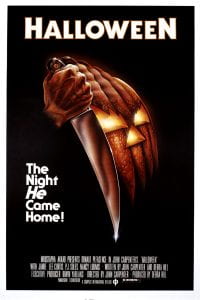Post production of our PLP horror movie is underway and my brain has never been more saturated with the ins the outs and everything in-between.
On that note I would like to answer my driving question for this post: How do characters not taking the necessary “safe” actions aid in a successful horror movie?
Since our introduction of horror in Seattle, I’ve always asked myself this question. Somehow, someway, victims always make the “stupid” decision that gets them in trouble if not killed. There seems to be a lack of judgment in situations like these and I always question what the motive is. Can the plot be driven without these almost “fictional” elements? Today in this post I look to answer this question?
Michelle Park’s Honours these thesis titled “The Aesthetics and Psychology Behind Horror Films” sets my point up very well. Chapter 1 draws on the allure of horror films to us as consumers. Michelle states that humans are drawn to horror for a variety of reasons. Unrealism, thrill, curiosity, and imagination support my claim. My classmate Ben also does a great job of illustrating why people are drawn to horror movie in his post here.
The same way humans are attracted to horror films, the characters in horror movies are attracted to their own horror. The unrealism and the “I don’t believe my own eyes that are seeing a creepy clown outside my window” is what draws characters to open that window. A human’s or in this case the characters imagination and their curiosity run wild if they don’t double check and make sure there is no clown there.
Laurie Strode in Halloween (1978) is a classic example of how her lack of conviction gets her and her friends killed.  Laurie “encounters” Myers on several different occasions, easily enough times for any normal person to be completely spooked. Laurie fails to take the necessary precautions to remain safe while she is being stalked. Contact the police, arm herself, stay in a group of people, are all a multitude of precautions Laurie could have taken. Laurie fails to proceed with any precautionary measures and ends up dead as the final girl.
Laurie “encounters” Myers on several different occasions, easily enough times for any normal person to be completely spooked. Laurie fails to take the necessary precautions to remain safe while she is being stalked. Contact the police, arm herself, stay in a group of people, are all a multitude of precautions Laurie could have taken. Laurie fails to proceed with any precautionary measures and ends up dead as the final girl.
Through a creative elements lens this is actually a very precise technique that aids in the overall success of a horror movie. As a consumer, Laurie’s actions make me want to scream at my TV “Call the police! Do something about this!” as it seems so like the obvious thing to do. Allowing the character to play dumb acts like a hook, subconsciously, I am now hooked on seeing how the characters actions affect their death/continued role in the movie.
This trope of victims underplaying their danger and not taking the proper precautions can be seen in almost every horror movie to date. But this begs the question, surely not taking the safety precautions helps drive the plot, but is it a direct aid in making the movie a success?
I argue Yes. This sense of stupidity is a major way to build tension throughout the movie. Tension and the way the movie makes people feel is essential to a movies success. Characters not taking the safe actions in the movie not only drives the plot, but creates suspense, and a sense of uneasiness throughout the viewer. This gives the viewer certain thrill that makes them come back. Every. Time.
So, How do characters not taking the necessary “safe” actions aid in a successful horror movie? Not taking the precautionary actions helps drive the plot forward. It builds tension, creates suspense, and makes the viewer feel uneasy, exactly what is needed to aid in a successful horror movie. Horror movies thrive off the way they make their audience feel, this technique allows the movie to control what the audience feels and makes way for a feeling of resolution once they are correct in thinking the actions of the individual get them killed. Most importantly, this makes people come back. This sense of completion they get once they are correct about the individual dying, serves as a hook. Hooked on the sequel, and hooked on the genre.
Hooked on the genre, and a damn successful movie.

Leave a Reply